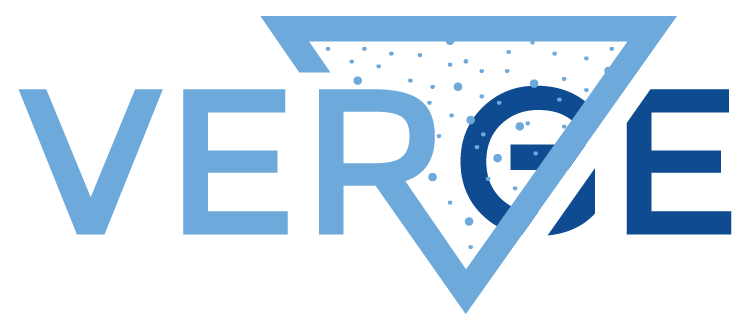
You’ve heard this before, I’m sure: “Changing culture is the hardest thing you’ll ever do.” Aside from the fact that such a statement is debatable, it does beg the question: What even is “culture”? How do we define it? Do we accept the biologist’s definition, the sociologist’s, or the anthropologist’s? Take your pick; I like them all. But if you pull out what’s similar and what’s generally agreed upon in most of these definitions, you’re left with a workable definition of culture, something you can use: culture is a group’s shared and integrated beliefs, values, assumptions, behaviors, and material objects (or artifacts). Culture, as a form, is a pattern of relationships between and among people in a group.
You can do the same thing with leadership, by the way. There are 90-some-thousand books out there on leadership, yet no one, neither business gurus, academic icons, nor military gods, can agree on a definition. I suspect there’s a good reason for that, though those authors seem not to know it. For one, leadership is highly contextual. And what counts as leadership in one context might not in another. The command-and-control leadership philosophy backed by government bureaucracies and their armies the world over would likely prove an abysmal failure in a fleet-footed business bent on generating, not consuming, capital.
Because contexts matter and are continually shifting and changing, like Heraclitus’s river, what counts as leadership will also have to shift and change (although I contend strong character should remain a commonality). It’s for that reason that leadership will always resist being precisely defined. But we know this: leadership from a position of character involves influence, occurs in groups of people, and is aimed at striving, struggling, and even fighting in some respects, to achieve the group’s shared goals.
Notice that nowhere in those ingredients for leadership is listed rank or position or title. They are indeed tools of influence, but they are not in and of themselves leadership. And if they are your only tools, good luck. Best to go work for the government.
What interests us, though, is the nexus between culture and leadership. And that nexus falls squarely on one word used in both descriptions: group.
The group is both the culture and the leaders (yes, leaders). Culture influences leaders, just as leaders, to include those with and without titles (and it’s important to understand that), can and should influence culture. And those leaders should influence the culture in what direction? Toward the achievement of its shared goals, naturally.
Viewed through the lens of complexity, culture and leadership (and strategy and performance as well) are not separate entities but form the warp and weft of a single integrated organizational narrative, a tapestry, a web even, a story of who the organization is, where it’s been, and where it’s headed. And both are emergent properties of their local context. Yes, you heard that right. You can literally do nothing, and yet both of these psycho-social phenomena will arise unbidden. Groups form, and out of those interrelated and interconnected groups culture and leadership comes forth. If you’re fine with leaving the attributes of these powerful phenomena to chance, though, then read no further.
But to pull on just one of those emergent threads for a moment, leadership is the primary tool, skill, process, and system not only to shape a high-performing culture but to actively construct the vessel in which that culture is contained and in which it flourishes. And that in a word is an awesome responsibility.
In our minds, a high-performing culture is synonymous with an adaptive culture. And it is the leaders’ (plural) responsibility to construct that culture, monitor it, and, when the leaders feel they are on the right path, to jealously guard that culture against all intruders foreign and domestic (to borrow the language of defending the constitution).
To do that, fill your organization with some hearty proactive problem solvers, particularly those who feel strongly that the problems they face are best solved by committing to a search for truth through spirited dialogue. It’s learning that emerges from the discussions and productive conflict, and it is to learning that you must commit. You might not celebrate failure, but you have to do more than tolerate it; you have to learn from it, and to do that you’ll need to ensure that feedback, to include the good, the bad, and the ugly, is the coin of the realm. (Incidentally, honest, bottom-up feedback is what’s missing in the command-and-control style of leadership.)
On top of that, adopt a favorable view of human nature—or at least a positive view of the people in your organization. Get this: people generally set out to do good—they want to do good—and they can and will change if you create a psychologically safe place for them to do so. But don’t just adopt a favorable view of people, root out those who don’t harbor that same view. They will only, in some subtle ways, “train” their subordinates and peers, and perhaps their leaders as well, to display the kinds of poor traits they accuse people of in the first place. This particular kind of negativity is insidious, and there’s no room for it in a culture set on reaching the stars.
Next, add a healthy dose of optimism to your organizational diet. Put it in your morning coffee. (Everybody else seems to have a recommendation for what goes in your coffee these days, optimism is mine.) I’m not saying you should become a Pollyanna, not at all. Optimism simply means that the team believes they can manage and even influence their internal and external environments—at least to some extent—and that in the face of change, even radical change, they can remain resilient and even reinvent themselves if necessary.
Remember, too, that while history matters, and that while living in the moment is a powerful personal practice, you must orient your teams toward the future. To do that, commit to open and truthful communications. Cast off the old communication wheel, where subordinates communicate with the leader but not with each other, and create a communication web where everyone can, at least in theory, talk freely with everyone else. Such a practice affords many things, not the least of which is an ability to anticipate events on the horizon, both those that pose as threats and those that pose as opportunities. To not only survive in a complex environment but to succeed in it, to flourish, the quality and quantity of interactions inside an organization will directly correlate to engagement, innovation, and performance.
And if you can commit to that last piece, which isn’t easy, that also means you have to commit to diversity. You have to go all in. And I’m not talking solely about a healthy mix of men and women and a blend of ethnicities. That’s important, but I’d encourage you to go deeper and expand your notion of diversity and what it is. Go beyond the color of skin and sex and bring together people with different skills sets, different levels of education, and different cultural backgrounds. Sic that group on the issues that confront you right now. Why? Because diverse people see and interpret the world in diverse ways—and cognitive diversity is a wonderful thing. If you can integrate and weave together into your organizational narrative the threads of their insights, you stand the chance of creating solutions that are far more powerful than what any one person (you for instance) could have dreamed up, or far more powerful than what any homogenous group (the exec team or the marketing team) could have summoned.
Lastly, people in high-performing, adaptive and sustaining cultures understand that the world is only growing in complexity. Swear off the traditional, linear, causal view of the marketplace (and the world) in favor of systemic thinking and complex mental models that boost learning and performance. Think of your organization like your brain. Your people are your neurons (all 85 billion of them!), each connected to scores of their brother and sister neurons, all interconnected and interdependent, and all with the ability to change and adapt. What might emerge if you were actually to create such an organizational model? Try consciousness.
If you want to lead, then this is your charge.
BCLD,
Dave

